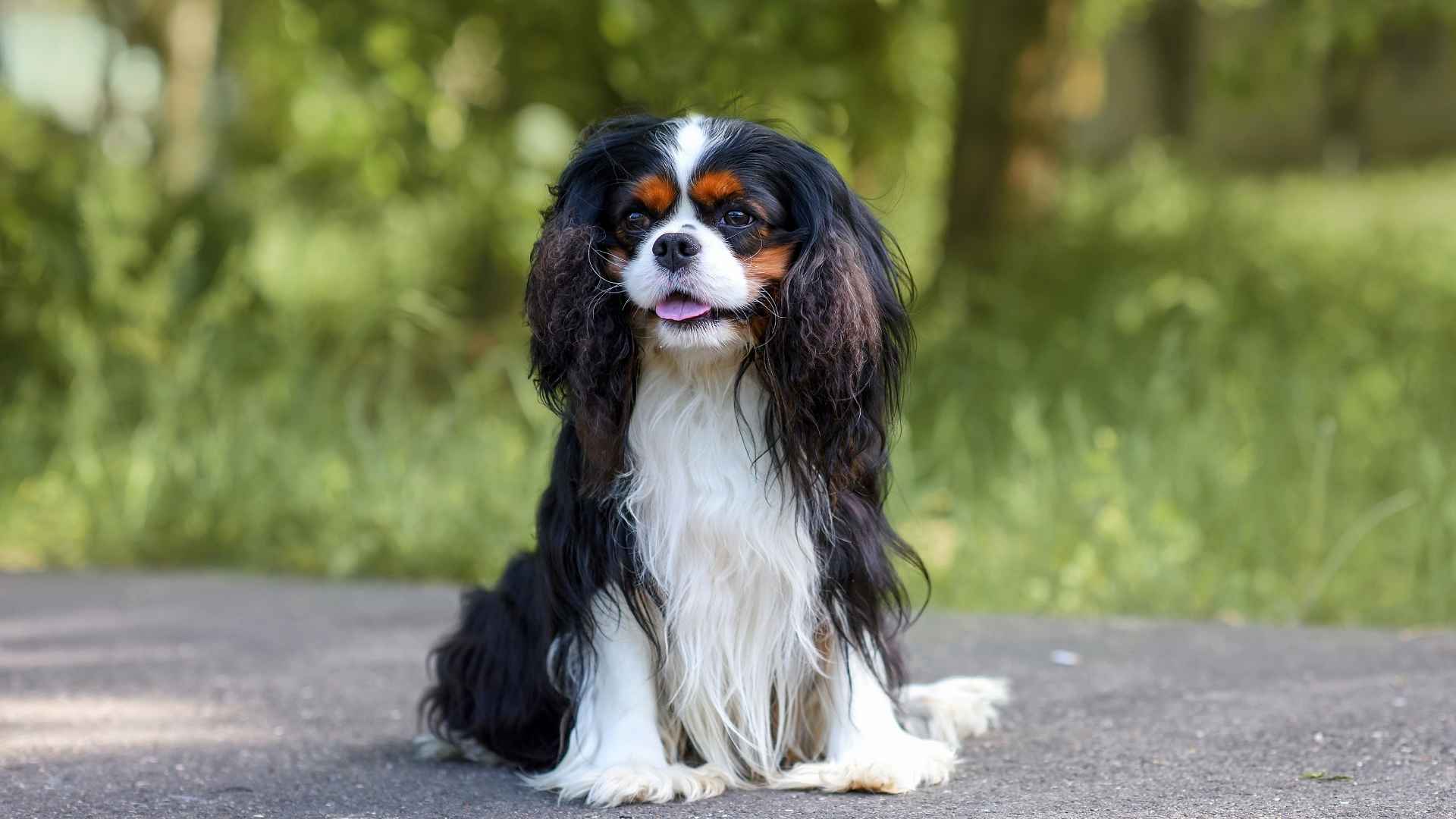Looking for a furry friend who brings tranquility to your home? Some dog breeds are known to be surprisingly calm, easygoing, level-headed, and gentle despite their size or appearance. These dogs smooth out the chaos and offer a peaceful presence at the end of a busy day.
Their relaxed demeanor doesn’t mean they’re lazy; many are alert, intelligent, and engage when needed. Many of these dogs were developed for steady, focused roles, like guarding livestock, pulling sleds, or accompanying hunters for hours without distraction. Their purpose-bred patience carries over into home life, where they bring structure and calm.
In this article, we’ll introduce nine breeds recognized for their surprisingly calm personalities. You’ll learn what makes each one unique, how their temperament blends into family life, and which could be a good fit if you’re seeking a canine companion that’s more chilled than excitable.
Dog Breeds With Surprisingly Calm Personalities
1. Havanese
The Havanese is often known for its cheerfulness, but its gentle demeanor stands out in quieter homes. While lively in play, these dogs can settle into calm, predictable routines when given the right structure and attention.
The breed’s adaptability and consistent nature make it a good choice for families or individuals seeking an even-tempered dog. They’re quick to pick up on daily rhythms and respond well to soft tones and consistent interaction.
They do enjoy spending time near their owners and may follow from room to room, but without overwhelming attention-seeking. Their quiet presence makes them easy companions for smaller homes.
They respond to training with attentiveness and rarely become overly reactive. Proper boundaries early on help them stay balanced and content.
While small, they bring more than energy; they bring emotional balance, routine, and quiet companionship to the home.
2. Bullmastiff
The Bullmastiff is often mistaken for an intimidating presence, but it’s actually one of the true gentle giants of the dog world. It uses its strength for protection but remains composed in unfamiliar or chaotic settings.
This breed was originally bred to guard estates without aggression. As per PetMD, they tend to assess a situation quietly and react only when necessary, making them a calm dog breed in most homes.
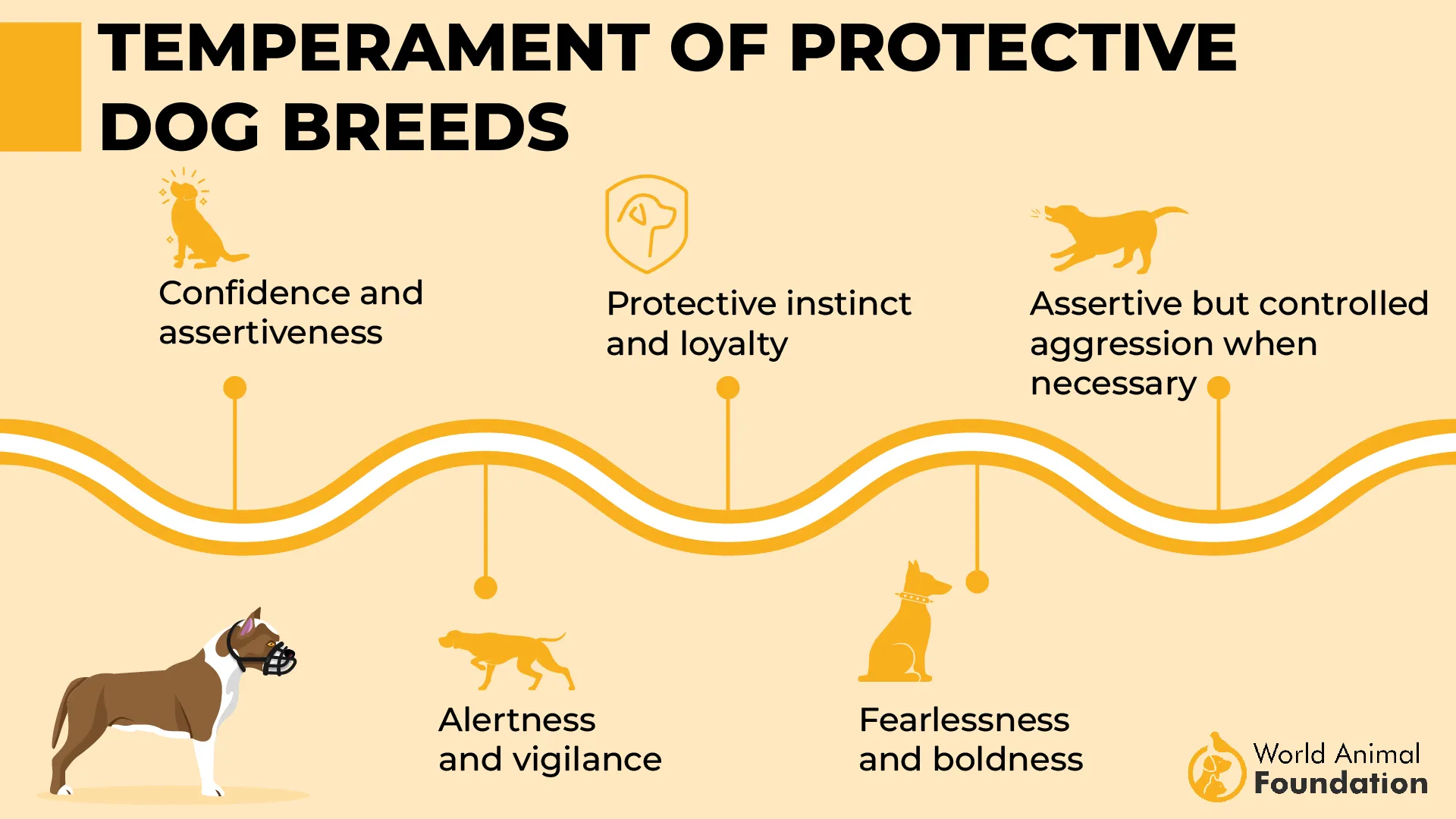
They form strong bonds with their families and often rest close to high-traffic areas just to keep an eye on things. Despite their size, they don’t demand constant attention or space.
Training is important from a young age due to their strength, but their willingness to listen increases with consistent, calm instruction.
They require structure more than activity and often match the pace of their households without trying to dominate it.
3. Maltese
Maltese are frequently assumed to be energetic lap warmers, but many adjust to a more laid-back lifestyle than expected. Their playful energy fades quickly into calm restfulness when given a predictable schedule.
They are light and affectionate, often curling up next to people or staying in the same room, without becoming overly dependent. With minimal distractions, they easily adapt to a peaceful environment.
They respond well to calm leadership and short training sessions. Overstimulation tends to disrupt their calm more than engage them.
Despite their size, they show little nervous energy when raised with consistency. Grooming may be high, but behavioral demands are low.
They make ideal companions for slower-paced homes and can even adjust well to apartment living with the right balance of attention and rest.
4. Bichon Frise
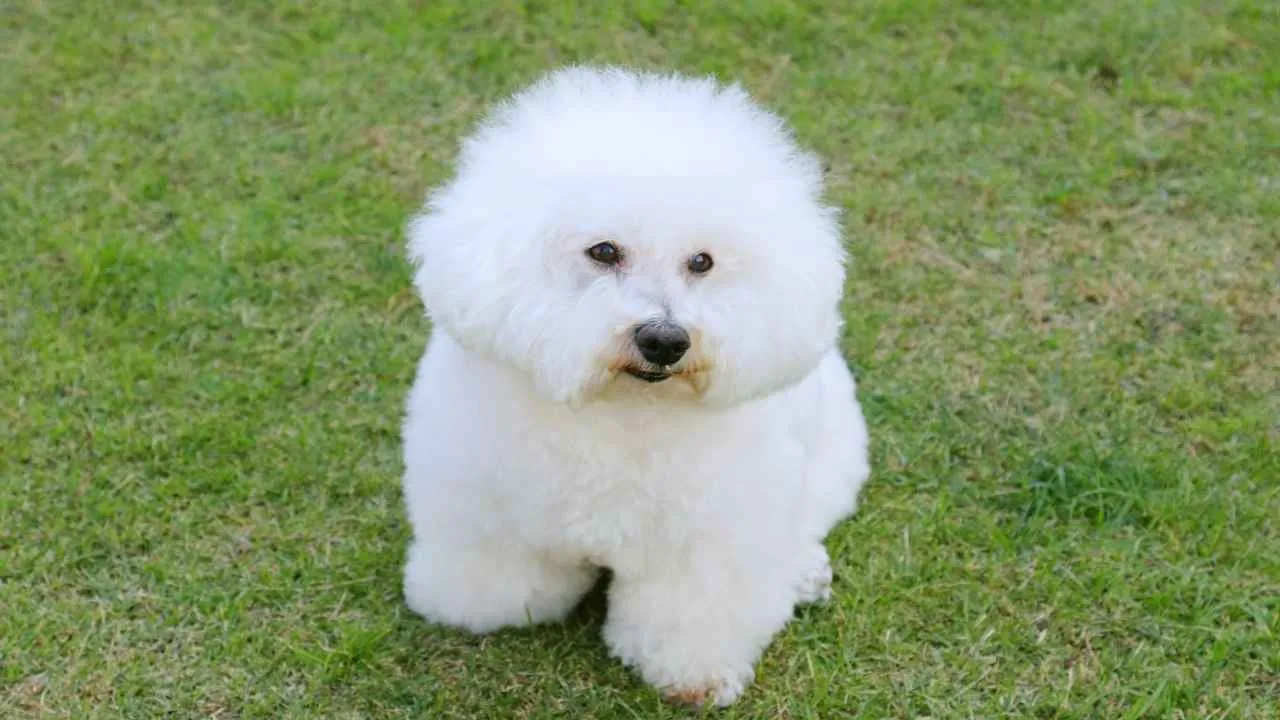
Bichon Frises are often thought of as bubbly and bouncy, but they adjust easily to downtime, especially in stable homes. Their individual personalities vary, but most are happy to rest quietly once they’ve had a short burst of activity.
According to the AKC, they were bred to be companions, which explains their social, emotionally aware temperament. They enjoy companionship but don’t overwhelm their owners with constant demands.
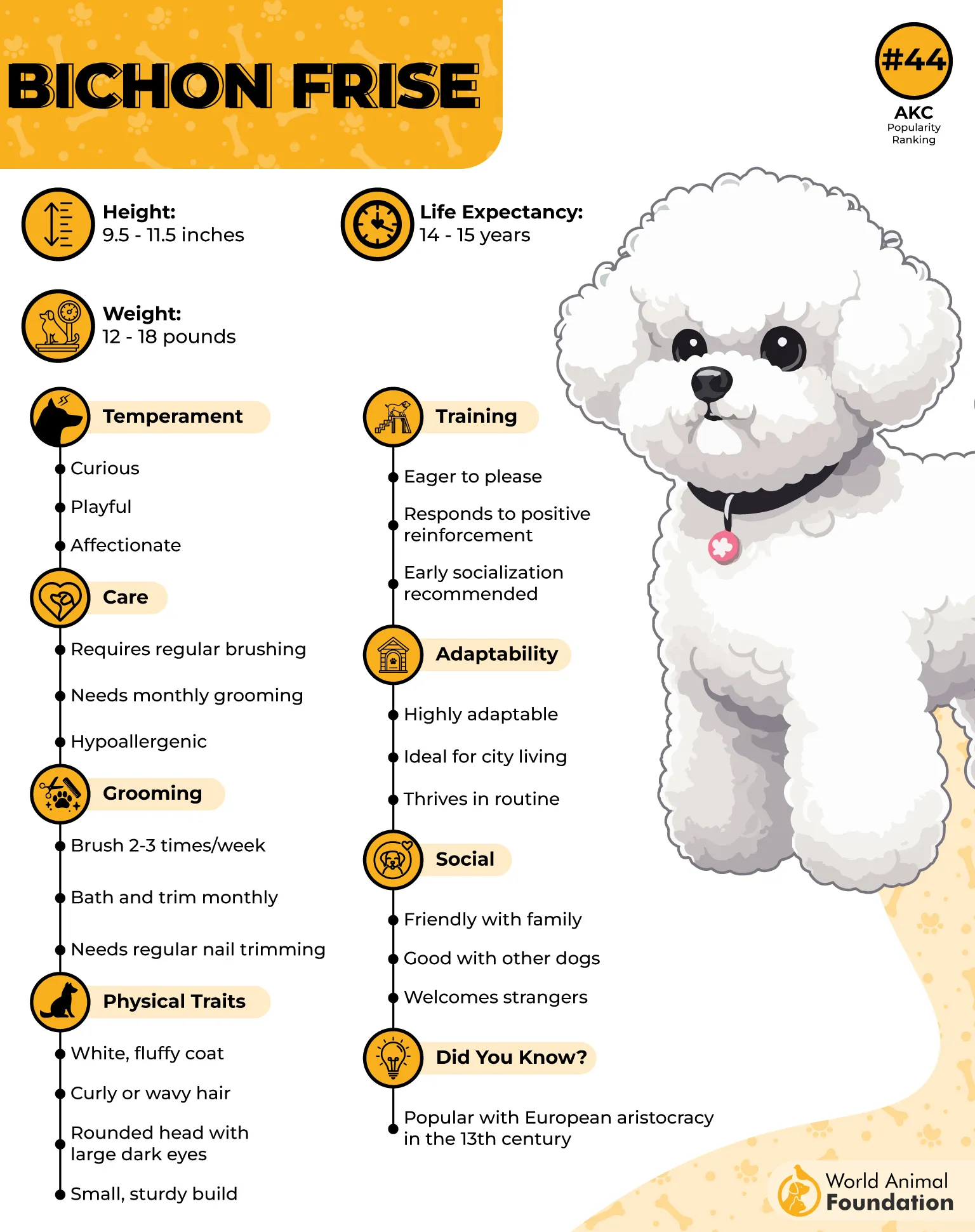
With mental stimulation and regular routines, Bichons remain steady. Puzzles, short walks, and social exposure help maintain emotional balance.
They are polite with strangers and often blend into both active and relaxed environments, adjusting their behavior to match.
Though not always seen as a calm dog, their behavior shows consistency when guided gently.
5. Cavalier King Charles Spaniel
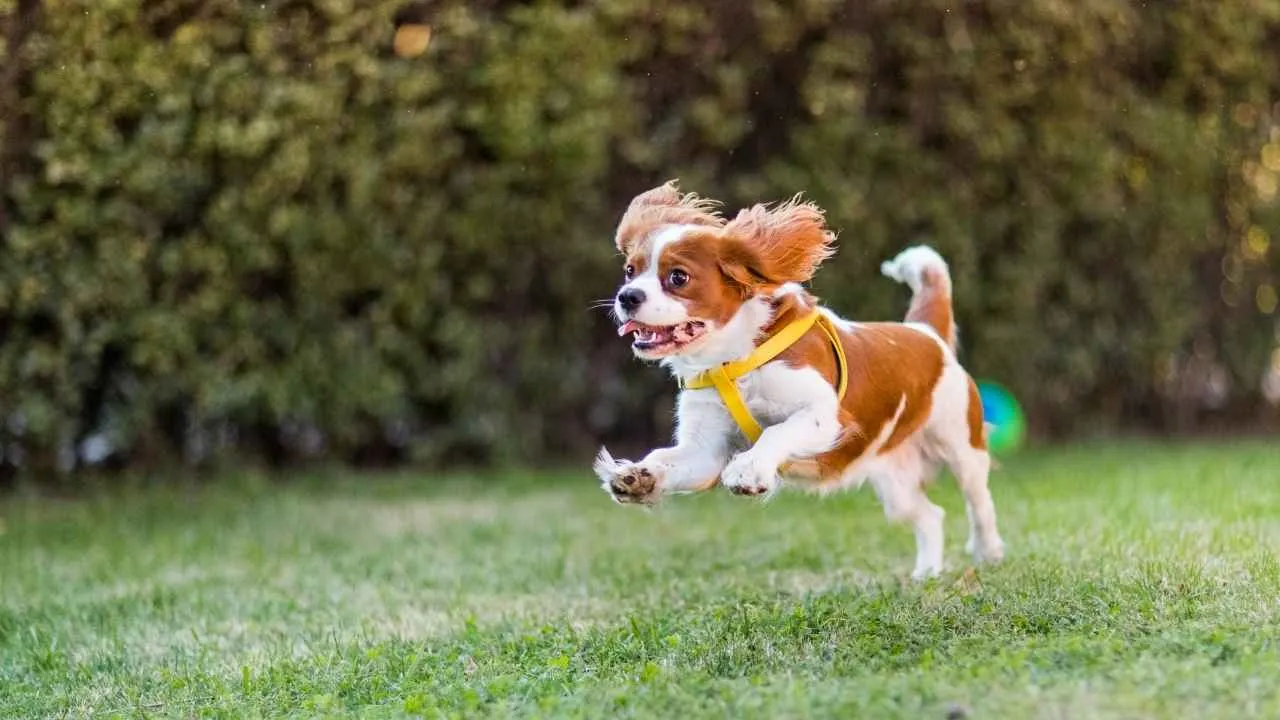
Cavalier King Charles Spaniels thrive on closeness and routine, preferring to enjoy spending time beside their people rather than rushing into play. Their pace matches a laid-back lifestyle, where touch and voice are more effective than noise or commands.
They are soft in temperament and highly attuned to their home’s rhythm. Their gentle temperament and small size make them especially well-suited to families or older individuals.
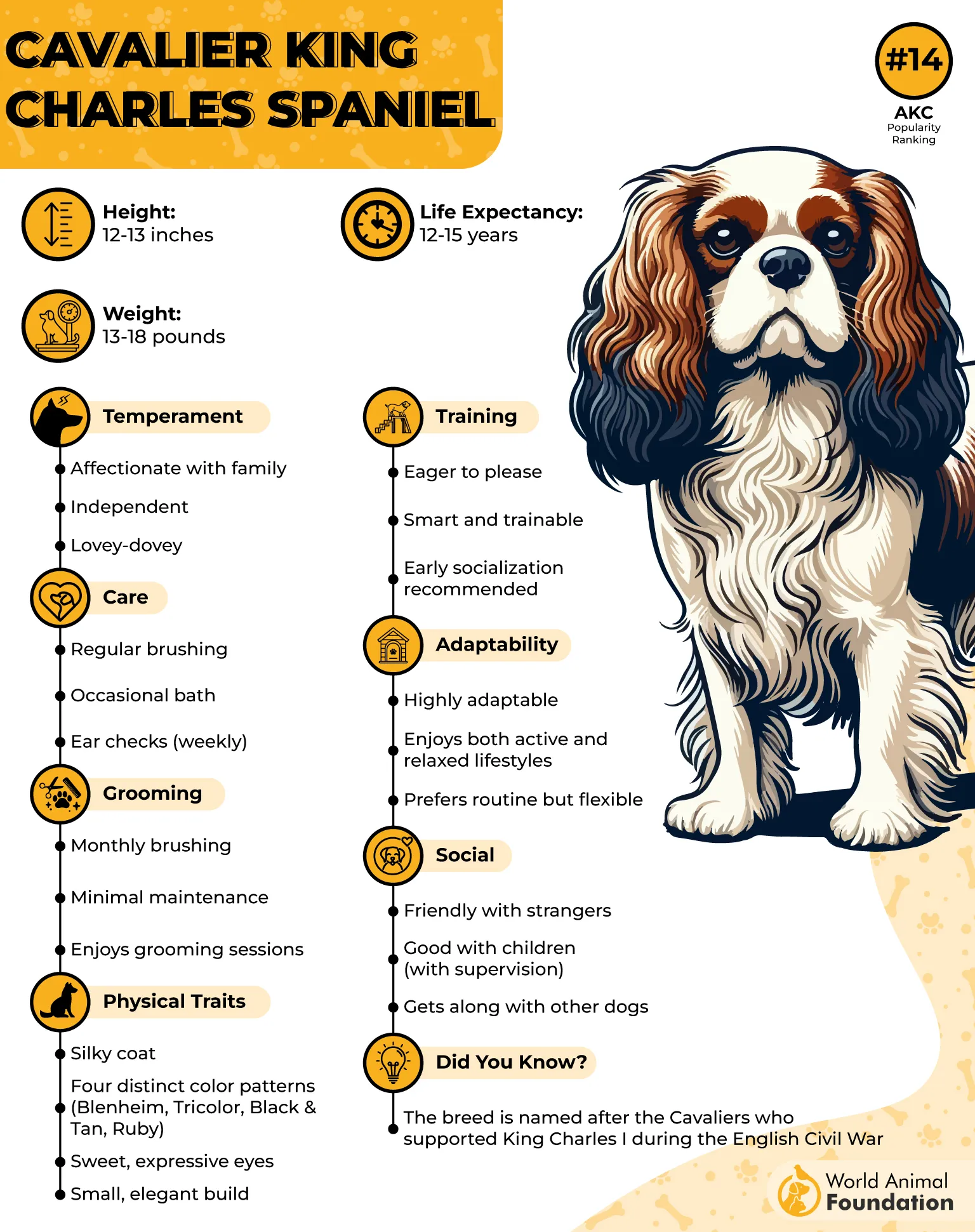
They rarely resist handling, grooming, or small shifts in routine. Their emotional steadiness stands out in multi-pet homes or homes with children.
Training is simple and effective when approached with calm repetition. Sudden changes or high-energy environments don’t bring out their best traits.
Their strength lies in emotional presence, not physical energy, making them a steady part of daily routines.
6. Great Pyrenees
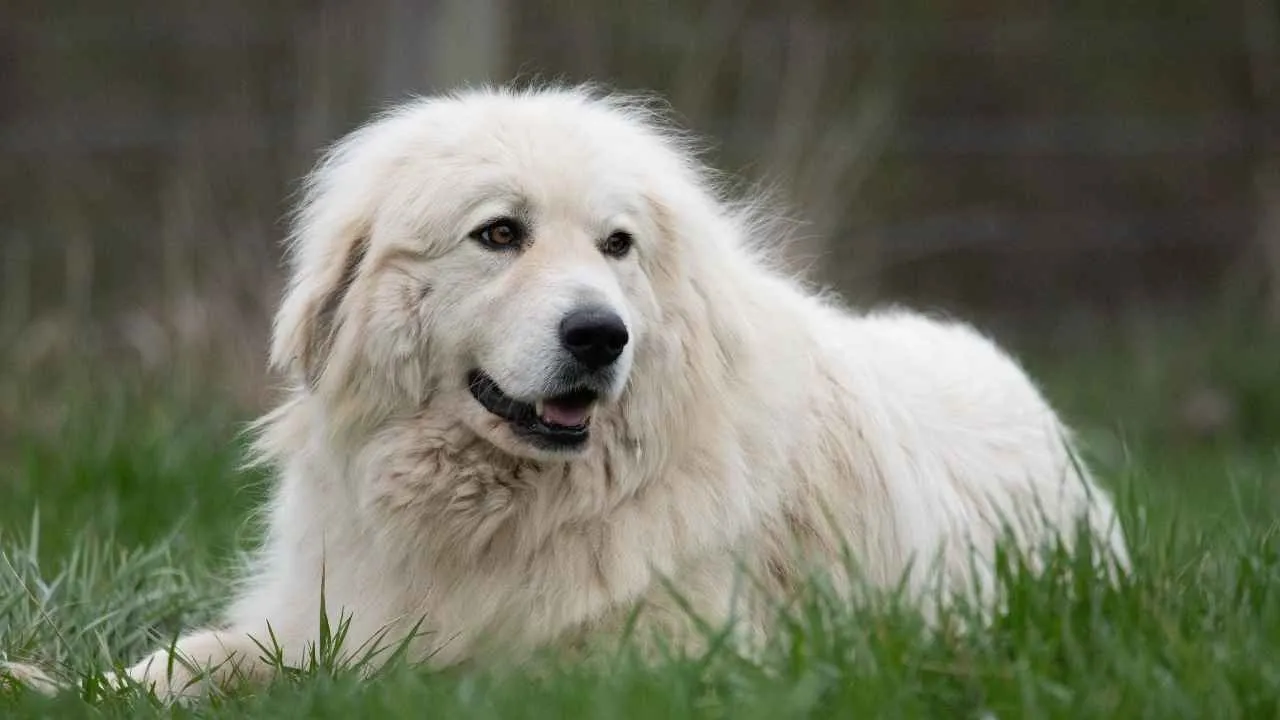
The Great Pyrenees was originally bred to protect sheep in mountainous terrain. Their work involved long hours of observation and independent decision-making, which contributes to their calm, slow-to-react nature today. They tend to stay alert without displaying unnecessary movement or vocalization.
They are confident in new settings and rarely overwhelmed by unfamiliar noise or changes. These dogs often position themselves in spots where they can monitor the home but won’t follow owners from room to room. Training works best when delivered in short, calm sessions with limited repetition.
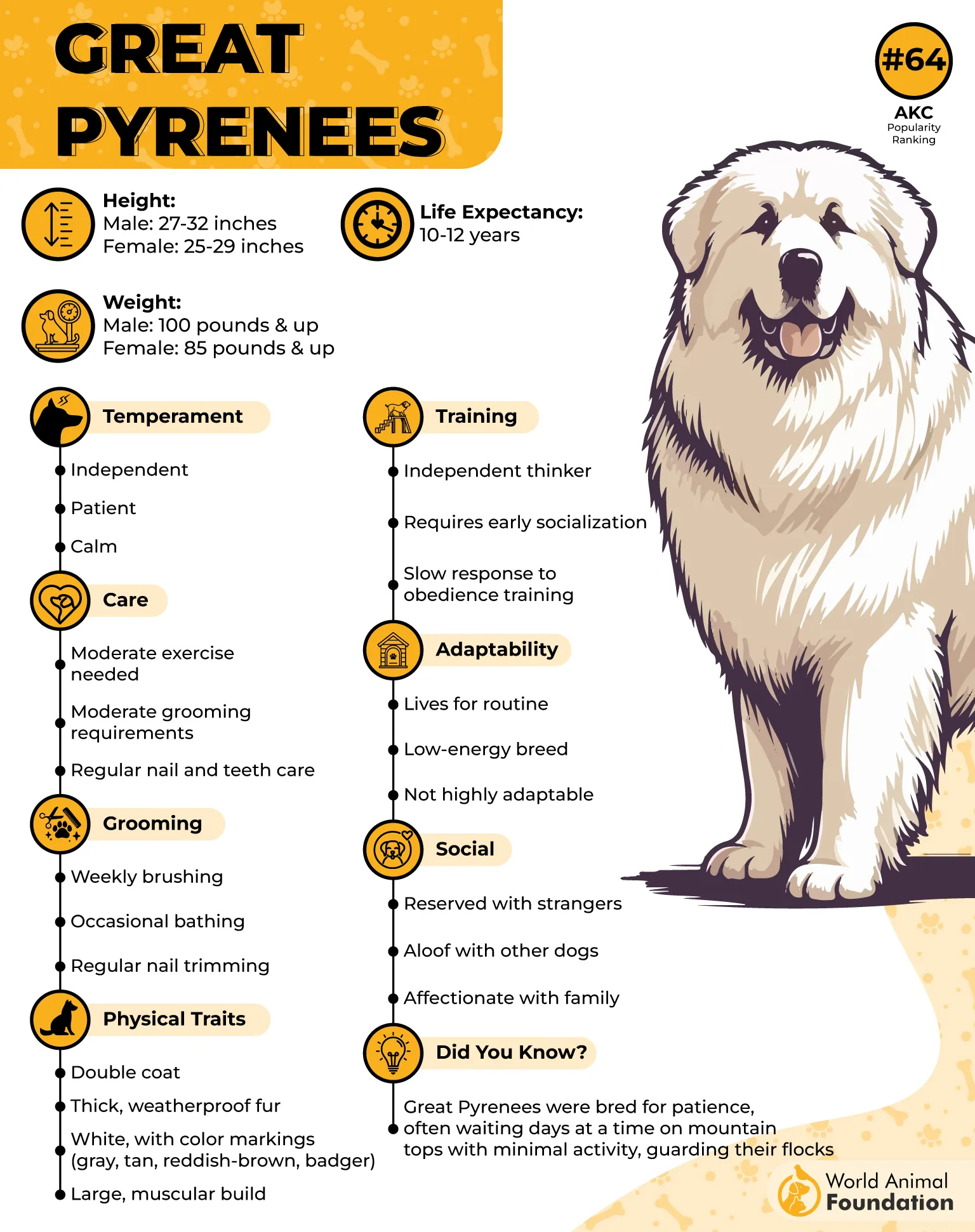
Daily exercise can be limited to leash walks or time in a secure yard, as they aren’t driven by high energy. Grooming is necessary several times per week to maintain their thick double coat, especially during shedding seasons.
According to Hill’s Pet, they usually get along with other pets, though early socialization helps avoid territorial behavior. Their ability to settle into a routine without constant attention makes them suitable for homes seeking an emotionally low-maintenance dog.
7. Great Dane
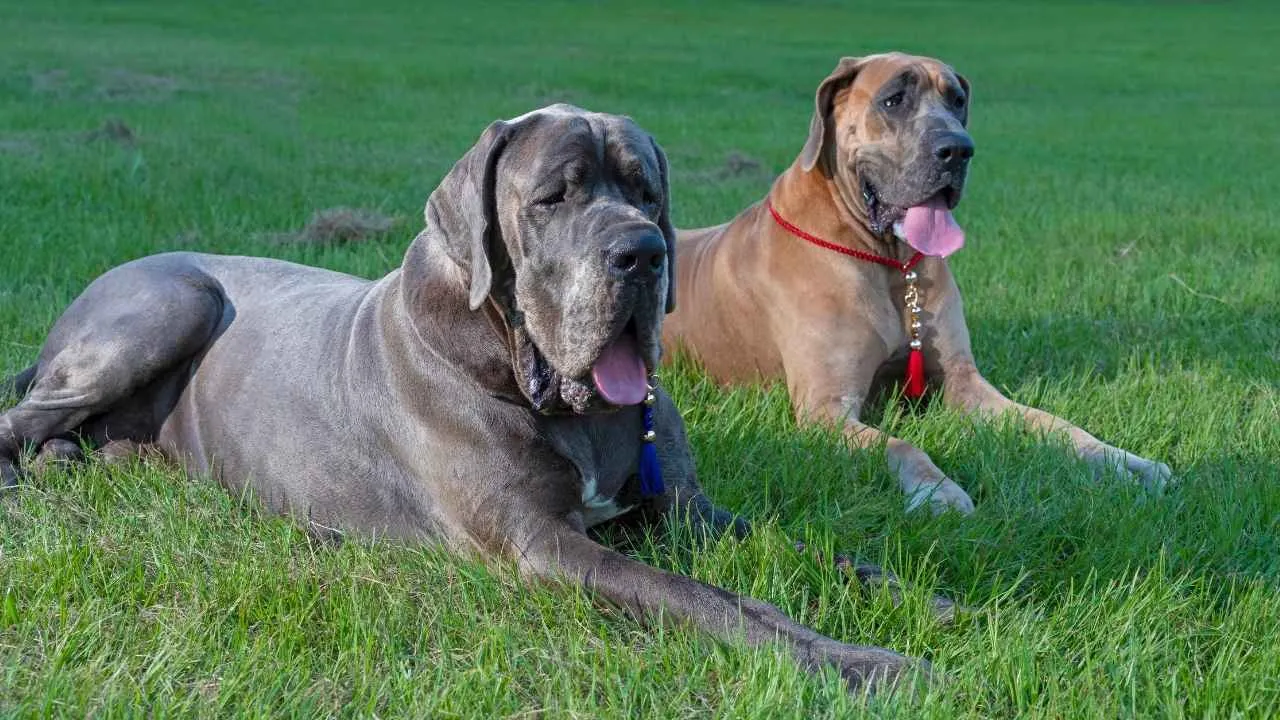
Despite their imposing build, Great Danes are quiet and composed indoors. Their size suggests high intensity, but they’re better suited to slow-paced routines and rest. They tend to settle in well with owners who value calm structure and predictable activity.
Their background includes guarding estates and pulling carts, tasks that required steady movement and measured reactions. Danes prefer contact with humans but don’t constantly seek stimulation. They do well in homes that balance touch, voice, and space.
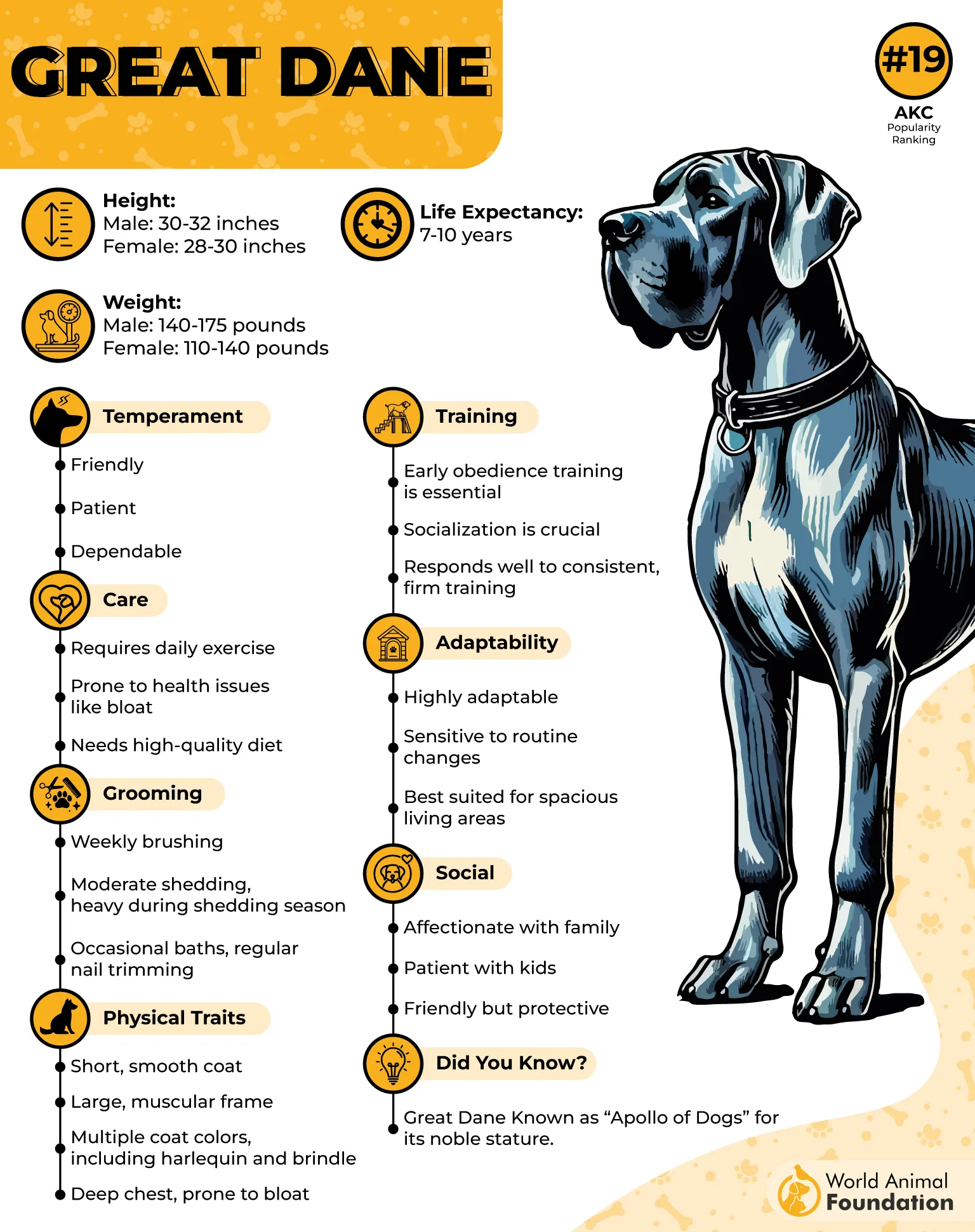
Daily walks and moderate play are usually enough to keep them relaxed. Their large frame requires soft bedding and joint care, particularly as they age. Their overall energy level is low, and they often nap for extended periods throughout the day.
Training should begin early due to their strength, but their willingness to listen improves with gentle direction. Loud environments can cause stress or overexcitement, so calm surroundings are ideal.
They often form stable attachments with family members and maintain even behavior in most indoor settings. Owners should expect steady companionship, not intensity.
8. Greyhound
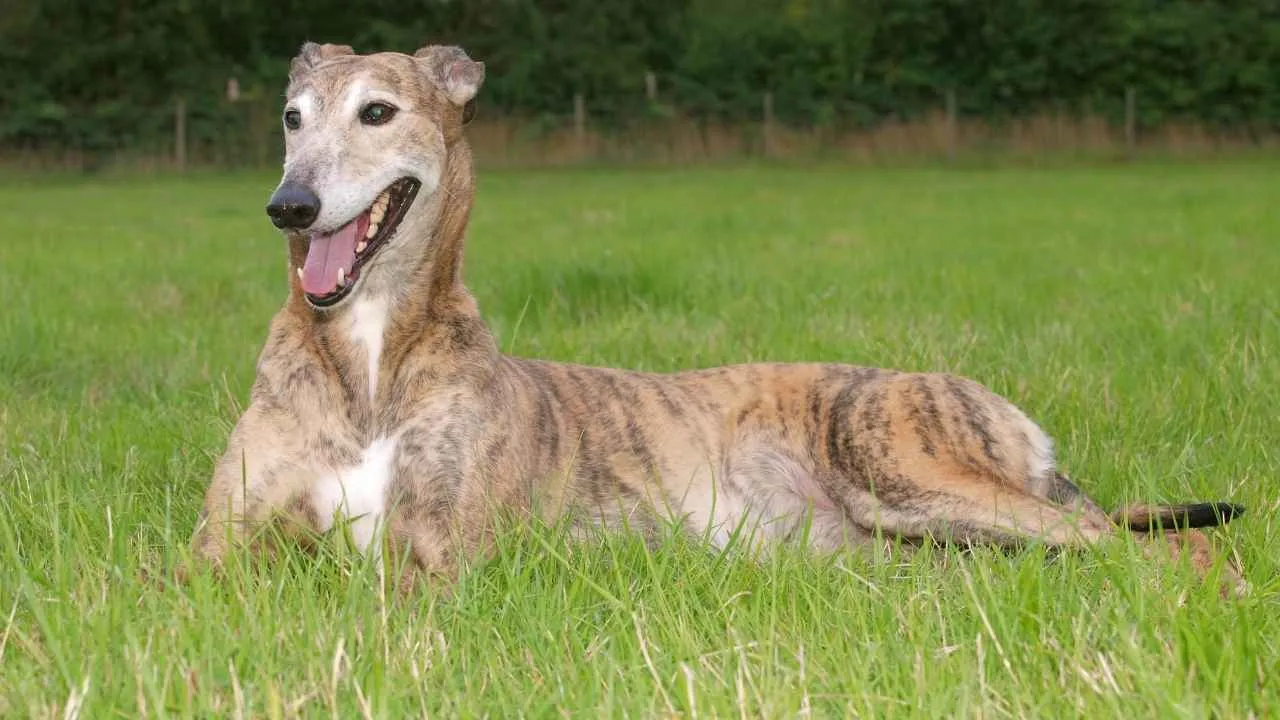
Greyhounds are frequently misjudged as high-energy because of their racing history, but most are comfortable with a relaxed lifestyle. Once retired, they transition quickly into quiet, home-based routines with minimal need for supervision.
They benefit from light daily walks and soft, enclosed resting areas. These dogs are naturally quiet and adapt well to smaller homes, even with limited activity.
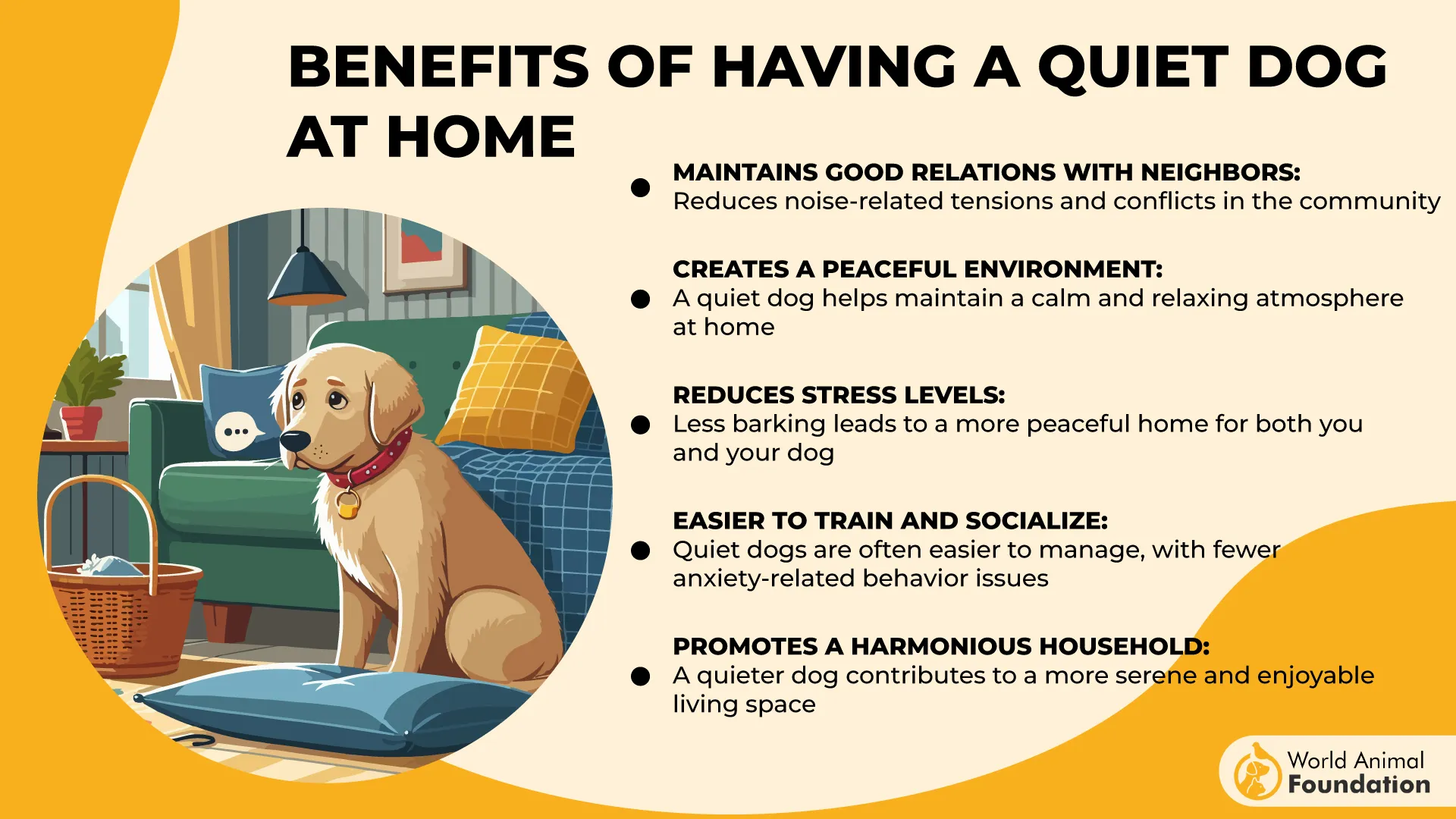
Though gentle, they are not clingy. They may rest in separate rooms and emerge when called or when activity shifts. Some need extra time to adapt to indoor life, particularly if coming from racing backgrounds.
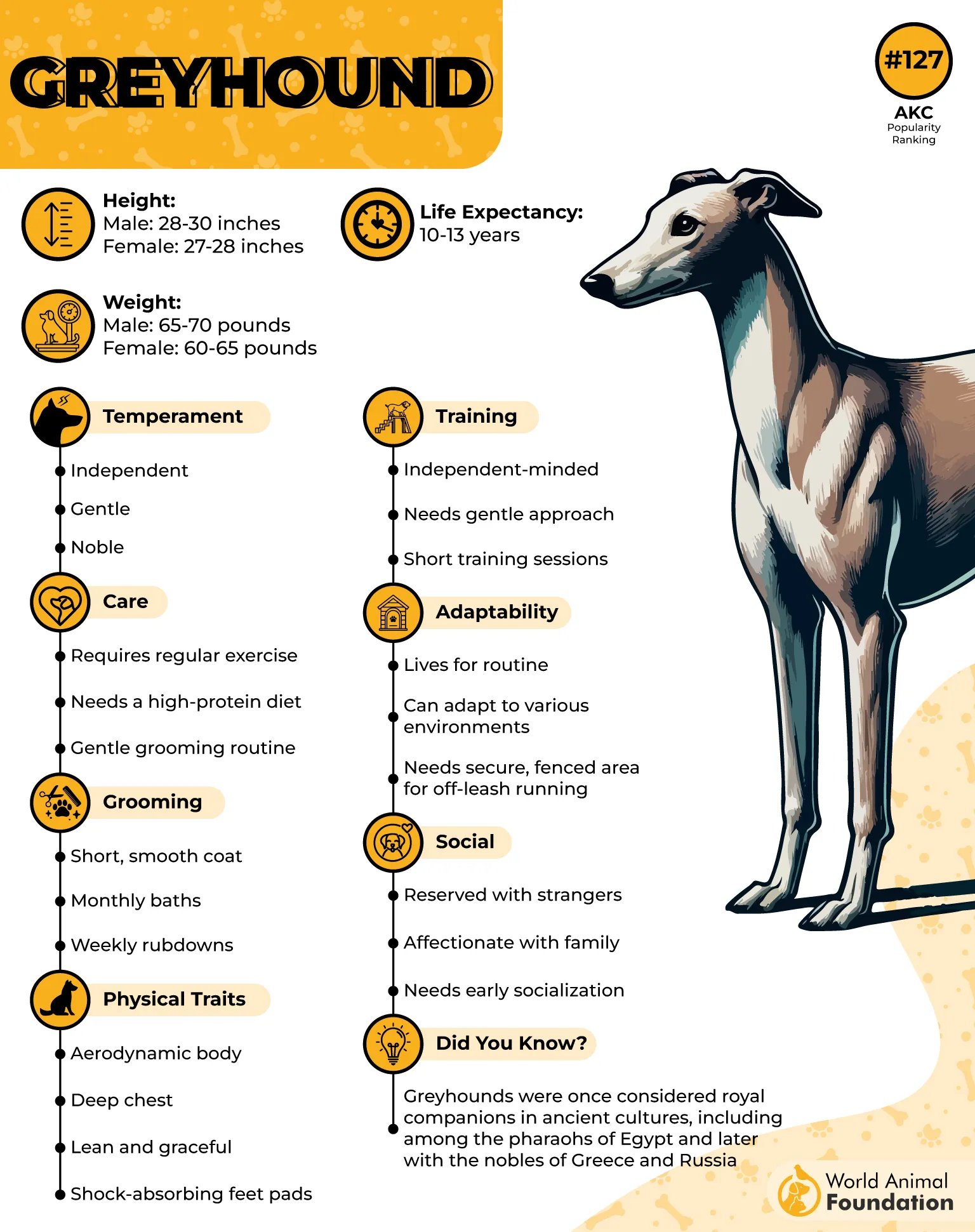
Grooming is minimal due to their short coat, but they are sensitive to cold and require soft surfaces to avoid joint pressure. Food and water intake should be monitored to avoid stomach issues.
They are non-aggressive and tend to ignore distractions unless startled. Their passive nature suits households that prioritize routine and low noise levels.
9. Newfoundland
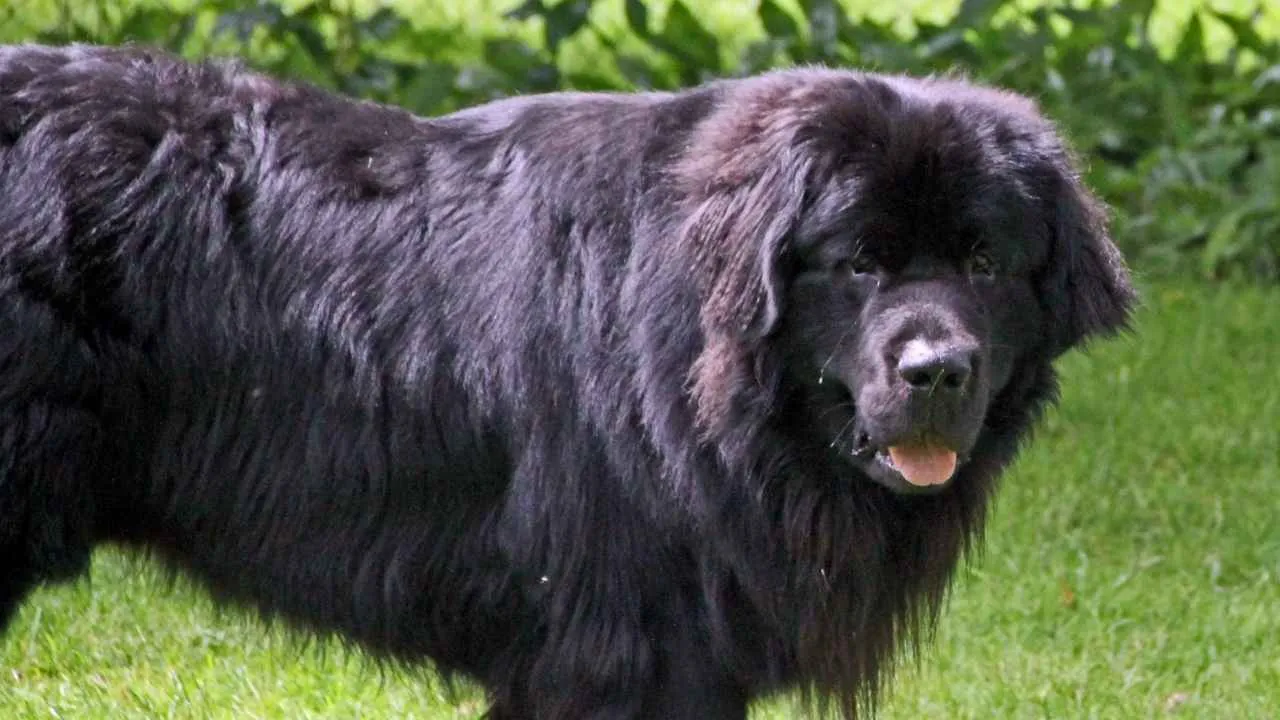
Newfoundlands were developed in Canada to assist fishermen with hauling nets and performing water rescues. Their working history demanded calm under pressure and strong, reliable reactions—traits that still define the breed today. They are physically large but naturally composed in new environments.
They handle household noise, guests, and children with ease and typically choose observation over excitement. Their gentle temperament makes them ideal for families looking for a quiet presence rather than stimulation.
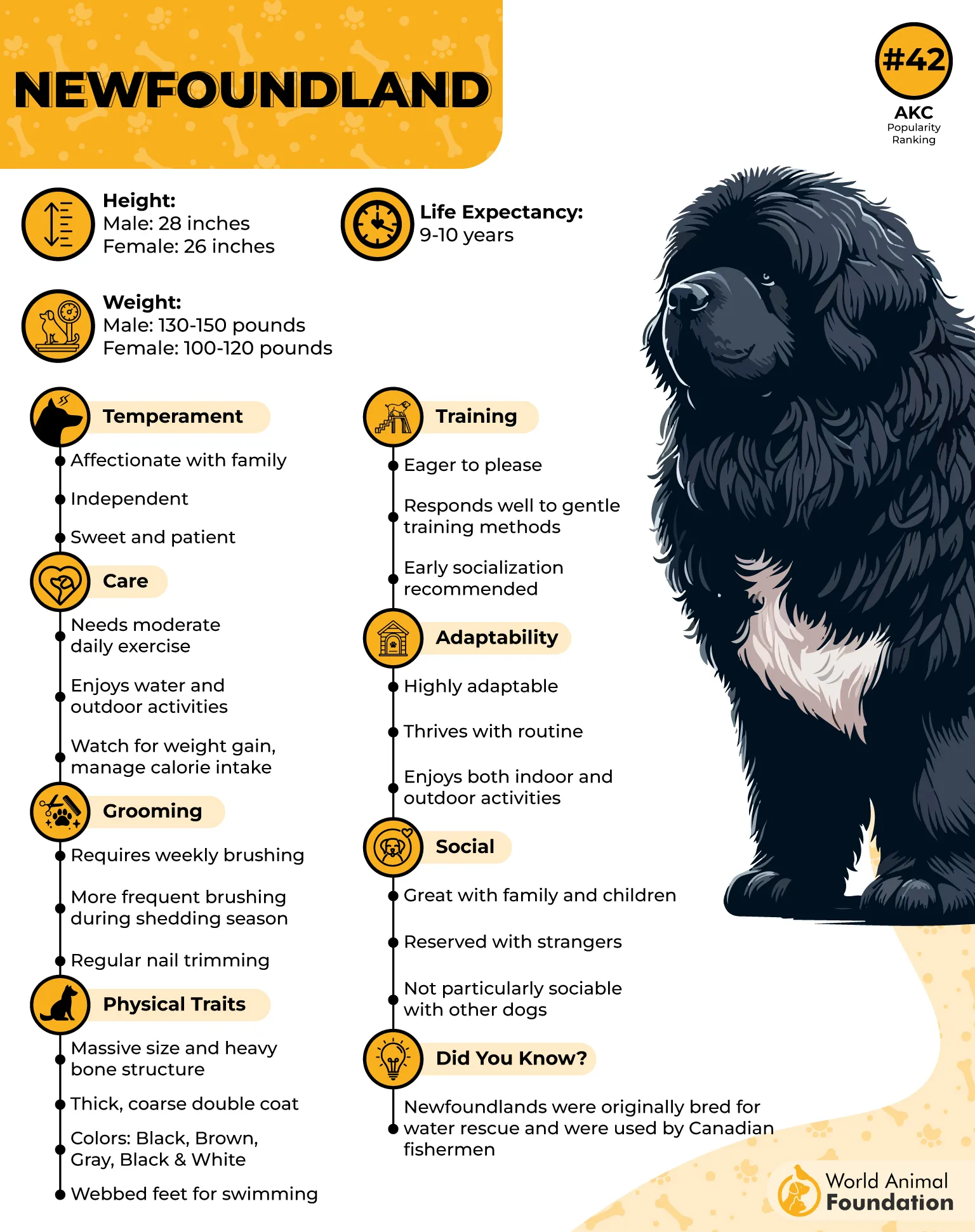
This breed needs moderate daily activity but prefers cool temperatures and shaded rest areas. Grooming is regular and time-consuming due to their dense coat, but it helps manage shedding and skin health.
They enjoy spending time with family members without becoming overly dependent. While they do form strong attachments, they remain balanced and responsive rather than needy.
Training is straightforward, especially with early exposure to routines. Newfoundlands require firm guidance, not correction, and typically respond well to clear boundaries and a consistent tone.
Conclusion
Calm dogs aren’t always what they seem. Some of the most relaxed companions come with big personalities, while others quietly settle onto the couch without needing much space or activity. Their temperament isn’t defined by large size or energy level alone; it’s shaped by breeding, routine, and relationship.
Many of these breeds were developed not just for work, but for companionship. Whether it’s a steady guardian or a light-footed lap dog, they share a strong desire to connect with their people and stay happy through daily structure and low-stress interaction.
These dogs learn quickly, enjoy short sessions of fetch, and thrive in homes that prioritize consistency over chaos. Their ability to bring peace into the house makes them a great choice for families, singles, or seniors looking for calm.
From the famously sweet to the surprisingly smart, these pups offer more than quiet—they bring reliable affection and everyday balance to life.


